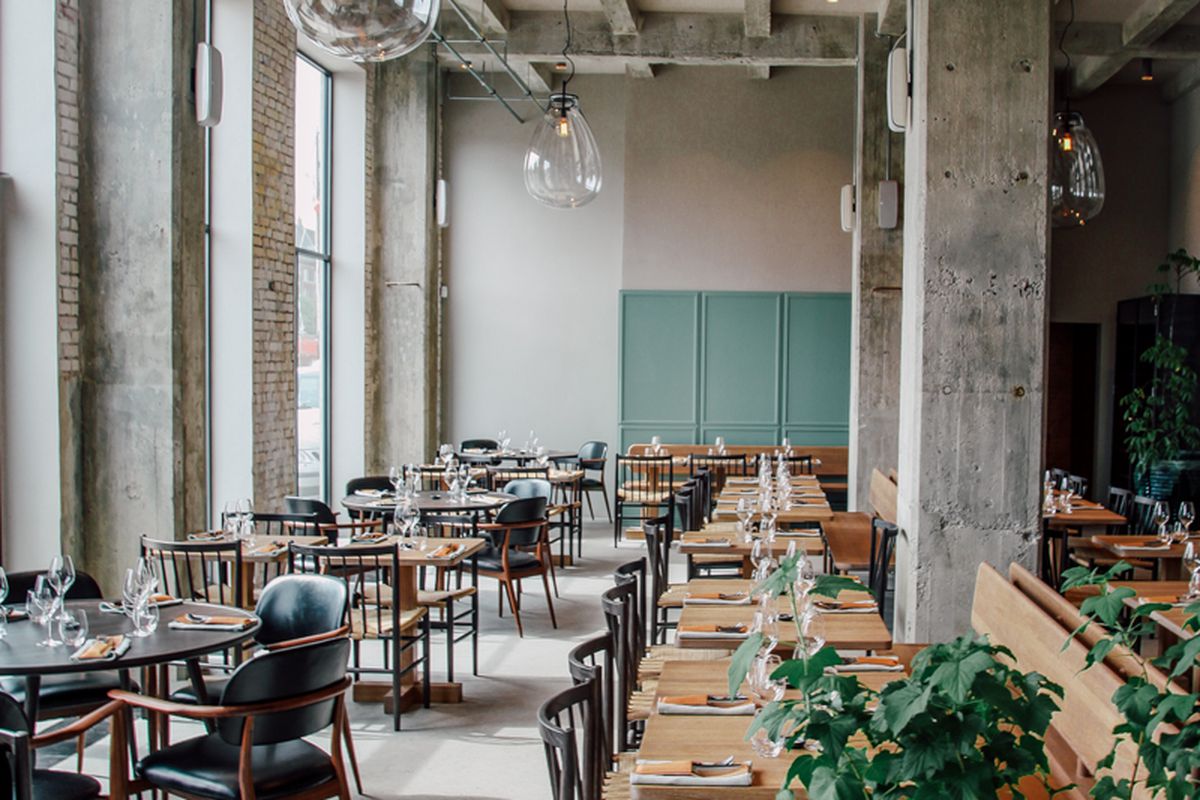
These Are The 10 Best Restaurants in The World
Article Published by: time.com
Each year, fine diners, restaurateurs and food writers—I’m in the last group—try to read the annual World’s 50 Best Restaurant list like tea leaves, searching for trends, or at the very least, a coherent theme. But as in previous years, the 2014 edition, which was announced in London late last month, defies unifying logic. The restaurants that made the full list of 100 range from David Chang’s decidedly informal and unsedate Momofuku Ssam Bar, to Alain Ducasse’s paragon of plushness, Louis XIV, in Monaco. That said, in the past several years, the highest-ranking positions have tended to go to restaurants that balance at least a degree of luxury (although not always formal, none of them are cheap) with an embrace of innovation.
Such is the influence of the 50 Best that once a restaurant reaches the upper echelons of the list, its already sparse reservations become exceedingly difficult to come by. Several of the top places only allow bookings well in advance (for Noma it’s 3 months; for Eleven Madison it’s 28 days), and reservations disappear within minutes, so it helps to be online or on the phone as soon as they’re released. But if a quick hand with reservations website OpenTable or the cellphone doesn’t yield the desired results, there’s another possibility: Email the restaurant, give a range of dates when you’re available (the more flexible you are, the better your chances), and ask politely to be put on the wait list. Even the best restaurants frequently get cancellations.
Here’s a quick look at the top ten on this year’s 50 Best Restaurants List.
In most cases, the descriptions are based on my personal experience, but research and—the reports of colleagues—have filled in the details for the restaurants I haven’t visited.
1. Noma, (Copenhagen, Denmark). Cost of a meal for two, without wine: $600.
After losing the top ranking in 2013 (it had held the No. spot for the three previous years), Noma is firing on all cylinders these days. Located in an old whaling warehouse, the restaurant is the birthplace of “new Nordic” cuisine, which relies solely on ingredients available in region. But today, the restaurant is pushing far beyond its early days of foraged sea buckthorn and reindeer lichen. Dinner these days might start with a whole kohlrabi, filled with its fermented juice and bored with a straw, so that it looks and tastes like a coconut drink. The meal might then proceed through aebleskivers –a traditional Danish kind of fritter—brushed with a sauce made from fermented grasshopper, and end with a dessert of potato, almond, and plum purée. It sounds wacky, but somehow Redzepi and his crew manage to make it all delicious. As well as deeply pleasurable: Noma continues to offer what may well be the most engaged—and engaging—service in the world.
2. Celler de Can Roca, Girona, Spain. Cost of a meal for two, without wine: $390-480.
Celler de Can Roca is run by three brothers — head chef Joan, sommelier Josep, and pastry chef Jordi — who came by their trade honestly: they learned it from their parents. But it’s hard to imagine anything further from your average mom and pop cooking. In what may very well be the most beautiful dining room in Europe, a Roca meal dazzles with its wizardry (a starter called Eat The World that encapsulates, in five distinct bites, the tastes of the five different cuisines; a dessert called Messi’s Goal, that recreates, with a candied pitch, flying white chocolate balls, and a plateside iPod playing the roars of the crowd, what it feels like when Barcelona’s soccer hero Lionel Messi scores), while remaining firmly rooted in the flavors of the Mediterranean. Josep brings lucky guests on a tour of his cellar, where favorite wines have been singled out for multi-sensory treatments.
3. Osteria Francescana, Modena, Italy. Cost of a meal for two, without wine: $360-525.
Behind a stately exterior, the world’s most emotive chef, Massimo Bottura, cooks flights of fantasy and memory. The first sign that this is not your ordinary upscale Italian restaurant comes from the abstract contemporary paintings on the wall, but the art continues on the plate. The mortadella sandwich of every Italian child’s memory is turned into an impossibly light mousse, a Magnum ice cream bar becomes a sophisticated, foie-gras stuffed bite. And like his spectacular lacquered eel, which Bottura serves with saba and polenta to represent the apples and corn the eel would encounter on its way up the nearby Po river, his dishes are made more evocative by the stories that accompany them.
4. Eleven Madison Park, New York, USA. Cost of a meal for two, without wine: $450.
In this hushed yet theatrical dining room, Swiss-born chef Daniel Humm takes the whole farm-to-table movement, imbues it with a bit of French savoir-faire, and, like an alchemist, comes out with the quintessential New York restaurant. Indeed, the sense of place here comes not just from the locally grown and produced ingredients, but from Humm’s knowing nod to New York’s culinary culture. Pristine carrots, for example, get turned into a lightly whimsical take on steak tartare; sturgeon (brought to the table under a smoke-filled cloche) is served with the restaurant’s take on an everything bagel. Excellent service — graceful, attentive, modern — adds to the sense of supreme well-being.
5. Dinner. London, England. Cost of a meal for two, without wine: $230.
Heston Blumenthal took his fascination with English culinary history and turned it into something unexpectedly interesting for the rest of us. At the fashionable Dinner, located at the Mandarin Oriental hotel in London and overseen by chef Ashley Palmer-Watts, traditional (if quirkily named) dishes like Salamugundy and meat fruit are transformed into modern-day marvels (the latter into a light but rich chicken liver parfait, made up to look exactly like a mandarin orange) Is it indeed the U.K.’s best restaurant? Probably not. But as history lessons go, this one goes down extremely easily.
6. Mugaritz, Errenteria, Spain. Cost of meal for two, without wine: $470.
Andoni Luis Aduriz is the Aristotle of contemporary cuisine, a philosopher-king tucked away in the rolling hills of the Basque Country, about 20 minutes drive from San Sebastian. Cerebral, technically accomplished dishes like the Bloody Mary tomato (which looks and feels like a fresh tomato, but tastes of the cocktail), or his famous potato stones (whose river rock appearance gives the diner the uncomfortable sensation of being about to break her teeth), he manages to consistently surprise and delight his customers, all while maintaining a deep, almost pantheistic reverence for the nature around him.
7. D.O.M. Saõ Paulo, Brazil. Cost of meal for two, without wine: $400.
Given the media’s predilection for depicting chef Alex Atala standing thigh-deep in his much-loved Amazon, bare-chested and draped with a giant fish like some kind of latter-day Tarzan, it comes as something of a surprise that his restaurant is so refined. But the delicacy of signature dishes, like a pappardelle made from hearts of palm or a ceviche crafted of indigenous flavors, belies the wallop of their unusual flavors — and has helped Brazilians discover the bounty of their native terroir. Even the Amazonian ants he serves, redolent of lemongrass and placed gently atop a cube of pineapple, seem elegant.
8. Arzak. San Sebastian, Spain. Cost of meal for two, without wine: $530.
Juan Mari Arzak is one of the great geniuses of Spanish gastronomy, among the first to bring modern techniques and flavors to bear on regional cuisine — in his case, that of his native Basque Country. The kitchen of his restaurant, which is housed in a quaint-looking building but is surprisingly sleek inside, is now run largely by his daughter Elena. She continues the Basque-inflected innovation, with dishes like “waves” (they’re created with molds) of local spider crab and anise or monkfish cooked in a balloon of edible green papier-máche that manage to feel both regionally grounded and whimsical.
9. Alinea, Chicago, Illinois. Cost of a meal for two, without wine: $420.
Grant Achatz did a brief stint at Ferran Adrià’s elBulli, and ever since has been out avant-garding what was once the most avant-garde restaurant in the world. The 18-or-so-course tasting menu carries titles like “Scallop Acting Like Agedashi Tofu” and the tableware — some of it lovely, some of it looking like it was lifted from the spike-and-pincer collection of the Spanish Inquisition— is tailor-made for each course. Dinner in this Chicago restaurant consists of carefully-scripted experiences more than dishes: one course requires the diner to fold her own ravioli from a sheet of tomato pasta that, moments before, looked to be a decorative flag, while the final dessert, a mix of dark chocolate and about a hundred other things, is painted, drizzled and scattered by a chef directly on the table itself.
10. The Ledbury, London, England. Cost of a meal for two, without wine: $270.
Among the top ten restaurants, the Ledbury is probably the most classical, which is to say that its chef, Australian-born Brett Graham, is more interested in pleasure than wizardry. The dishes served in this London restaurant may not be as visually striking as in other places, but their flavors are deep and layered. Case in point: a buffalo milk curd, spread creamily onto crisp toasts that are topped with Iberico ham and served with a rich onion broth. Or grilled mackerel, its oily brine mellowed with cured avocado and brightened with shiso. And with a chef who hunts his own wild birds, this is the place in London to try game.
About Scott Livengood
Scott Livengood is the owner and CEO of Dewey’s Bakery, Inc., a commercial wholesale bakery with a respected national brand of ultra premium cookies and crackers.
Previously, Scott worked at Krispy Kreme Doughnuts for 27 years, starting as a trainee in 1977. He was appointed President of the company in 1992, then CEO and Chairman of the Board.
Scott has served on numerous boards including the Carter Center, the Calloway School of Business and the Babcock School of Management, Habitat for Humanity of Forsyth County, and the Winston-Salem Chamber of Commerce.
He started a new business, StoryWork International, in 2016 with Richard Stone. The signature achievement to date is LivingStories, a story-based program for improved patient experiences and outcomes in partnership with Novant Health.




